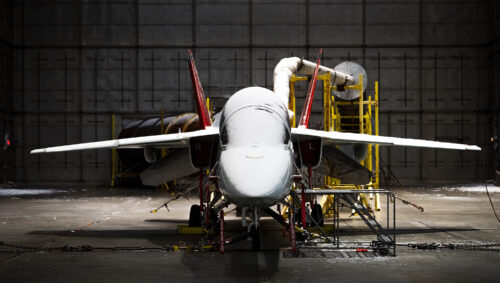The U.S. Air Force (USAF) announced the successful completion of a month-long climate testing program for its new T-7A Red Hawk trainer aircraft. This critical evaluation, held at Eglin Air Force Base’s McKinley Climatic Laboratory, is a crucial step in the T-7A’s development journey, ensuring its ability to withstand the diverse weather conditions it may encounter at training bases across the nation.

Military aircraft operate in a vast array of environments, from the frigid Arctic tundra to the scorching deserts of the Middle East. These varying climatic conditions can significantly impact an aircraft’s capabilities, affecting engine performance, system functionality, and overall operability. To guarantee the aircraft’s reliability and safety in its intended deployment locations, engineers conduct rigorous climate testing. This process allows them to identify potential limitations or vulnerabilities in extreme temperatures and humidity, ensuring the aircraft can function effectively and safely across diverse environments.
“We need to know the T-7A can operate in the environmental conditions it will encounter at pilot training bases around the country,” said Dr. Troy Hoeger, chief development tester for the T-7 with the Air Force Lifecycle Management Center in the press release.
The T-7A faced a series of demanding simulations at the McKinley Climatic Laboratory, renowned for its ability to replicate various climatic extremes. The aircraft endured temperatures spanning a wide range, from the bone-chilling -31.6 degrees Celsius to the scorching 43.3 degrees Celsius. High humidity conditions were also incorporated into the testing regime. While the specific performance details remain undisclosed, the USAF confirms that the T-7A successfully navigated these harsh environments, suggesting its systems functioned as expected under these challenging conditions.
The T-7A Red Hawk is poised to be the next-generation trainer aircraft for the USAF, gradually replacing the aging T-38 Talon. This transition aims to equip future pilots with a more advanced and efficient training platform. The T-7A boasts modern avionics, enhanced performance capabilities. The successful completion of climate testing marks a significant milestone in the T-7A’s development, paving the way for its potential integration into the USAF’s training fleet and ushering in a new era for pilot training within the service.
For more information, hit the Source below